Strategies For Church Marketing Online
Church Marketing Online uses biblical strategies to grow a church’s following. This includes knowing your audience, reaching out to them, building trust, focusing on spiritual matters, and calling them to action. Effective online church marketing mirrors how Jesus grew His following by addressing needs and building connections.
Do you want effective church marketing online strategies so you can grow your attendance or grow your online church presence?
Are you interested in learning Biblical church growth strategies?
Well, you are in the right place!
In this COMPLETELY FREE course, you’re going to get access to hours of video content and dozens of worksheets to help you create church marketing online strategies that work.
Introduction: A Biblical Framework For Christian Church Marketing
How Great Marketing Works
Video Notes:
Great church marketing online strategies work like this:
Principle 1: Know who you’re talking to.
Principle 2: Go to them.
Principle 3: Build their trust.
Principle 4: Redirect their attention.
Principle 5: Call them to action.
How Jesus Grew His Following
Jesus was an incredible marketer with thousands of followers. In the Gospels, we generally see Jesus using this model.
Principle 1: Jesus had a deep understanding of his target audience. (Even to knowing their thoughts Matt 12:25, Luke 5:22)
Principle 2: Going out to the people he wanted to reach.
Principle 3: Then he showed them his love in one way or another to build their trust.
Principle 4: Jesus redirects that attention of his audience from the physical to the spiritual.
Principle 5: Gives a call to action.
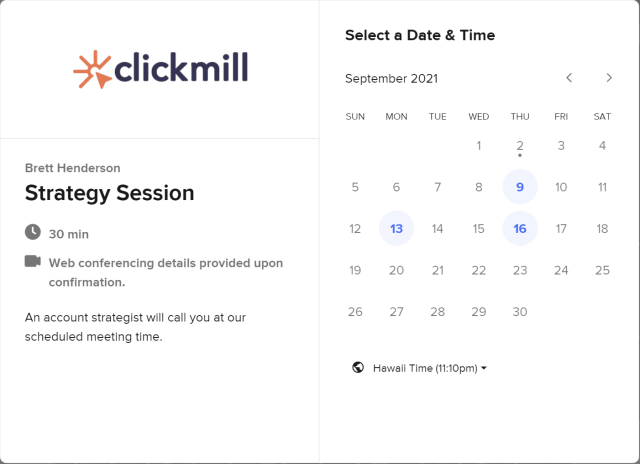
Get A Proven Marketing Plan That Increases Enrollments When You Book A Call Today!
Receive customized advice to help your school attract more families!
How Churches Try To Do Church Marketing Online
No doubt, those five principles sound pretty straightforward. In church, we intuitively expect things to work almost exactly the opposite. (address the awkwardness of this model for the visitor)
1.) Generally, churches aren’t too sure who their visitors will be or why they decide to show up.
2.) Churches expect strangers to the faith to come to them.
3.) Churches often fail to build trust in a meaningful way at the first point of contact.
4.) Churches often promote spiritual ideas to visitors at the first point of contact and expect them to just “get it.”
5.) Churches often expect visitors to come back again but never directly invite them to.
Church Marketing Online Principle 1: Know Who You’re Talking To
Step 1: Who Is Your Existing Core Audience?
Two Reasons Churches Don’t Connect
- They are communicating with the wrong audience.
- They are communicating to the right audience but their merchandise, services, and marketing don’t resonate with their audience.
Church Culture Vs. Corporate Culture
- Churches leaders often exist in a highly relational work environment. We view the church as our home and those who attend with us as family.
- To be more effective marketers, it can be useful to see our church-goers in a new light. For this reason, we will use the word clients. Your clients show up once a week to consume your services and experiences.
“Marketing is the process of bringing a product or service to the marketplace. If people in the marketplace don’t like what you have to offer, they won’t show up, and your doors will close. Churches are in the business of providing the “service” of sharing the Gospel. If your job is to market a church, you have to think like a business person.”
Creating Profiles
- Profiles help us generalize and understand large groups of people. It also helps us visualize them in a personal way.
- Creating a Target Audience Profile in Step 5 provides a deep and personal understanding which will help you communicate in a way that resonates with your Target Audience.

Get A Proven Marketing Plan That Increases Enrollments When You Book A Call Today!
Receive customized advice to help your school attract more families!
Jesus Tailors His Message To His Core Audience
The twelve disciples were Jesus’ core followers. He provided them with additional authority and responsibility.
He also explained deeper spiritual truths to his disciples than he would with the crowds.
In the passage below, Jesus gave the people all they could understand.
It seems the crowds could only grasp a certain amount of teaching but Jesus’ disciples could handle more spiritual meat.
Church leaders should also customize what they offer to their congregation.
This means it’s important to know who your typical clients are.
“With many similar parables Jesus spoke the word to them [the crowd], as much as they could understand. He did not say anything to them without using a parable. But when he was alone with his own disciples, he explained everything.” — Jesus, Mark 4:33-34
Instructions:
- Click the image on the below and print or download the worksheet.
- Once you have Worksheet 1 printed, click play on the video in this step.
“When you’re unclear about who your church is trying to reach, or if you want to target everyone, you will effectively speak to no-one. This principle is the foundation of good marketing.“
— Brett Henderson
If you would like to learn more about how to discover your target audience, I go super in depth in the eBook: The Digital Ministry: Reacching The Ends Of The Earth Without Leaving Home
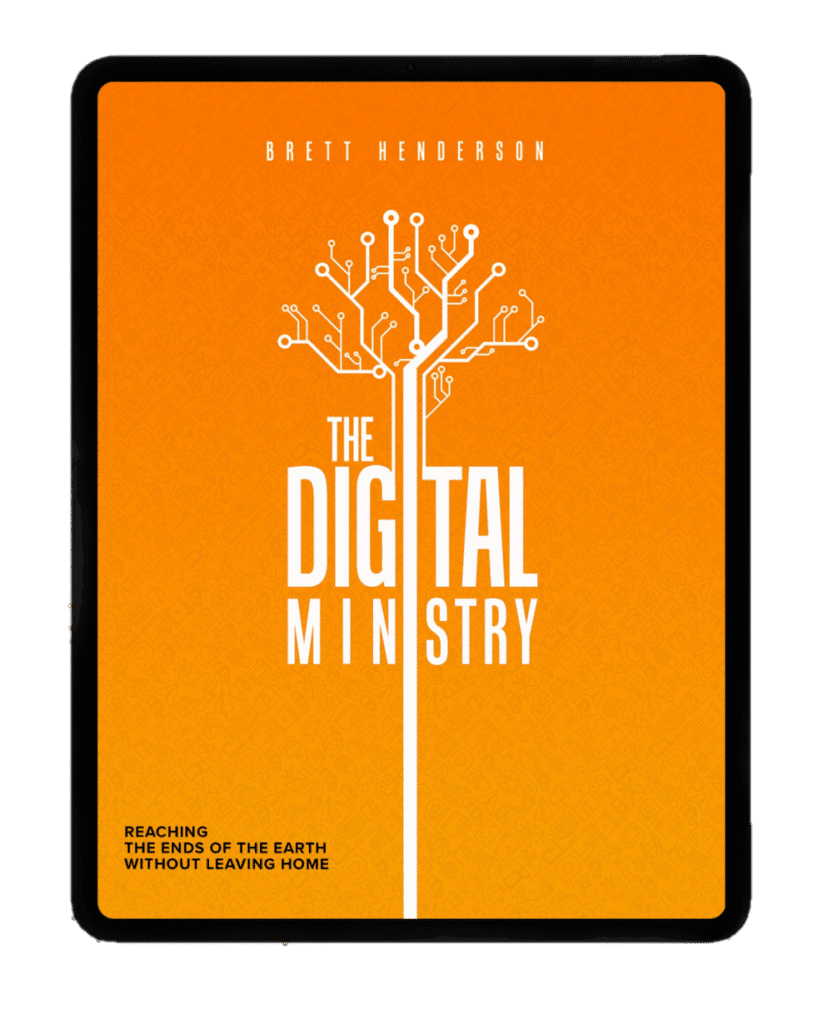
You can grab your copy on Amazon or get 10% off right here at Clickmill.
Step 2: Who Lives Near Your Church?
Video Notes: In Worksheet 2 two we want to identify what type of people are living within five miles of your church.
These are the most likely people to visit your church on Sunday morning.
Being able to visualize the people you’re speaking to in your church, and the people who live nearby can help identify if you are speaking to the wrong audience.
Jesus Was Sensitive To Geography
Jesus didn’t spend much time in Samaria because He was mainly targeting the Jews.
Jesus spent the majority of his time in Judea and Galilee where Jews lived.
You’re Target Audience and your geographic area are closely linked. Are you targeting the people in your area?
Paul Was Sensitive To Geography
Paul’s Target Audience was to share the Gospel message with the Gentiles.
We see that his missionary journeys and letters are focused on areas where Gentiles are found.
Peter Was Sensitive To Geography
Peter’s primary ministry was to the Jews in Jerusalem (Galatians 2:7-8.)
We see Peter interacting with Gentiles in Acts 10 but it seems Jews were still his main audience.
In Acts, it’s clear Peter is ministering in Jerusalem at least nine times (between Acts Chapter 2-11).
In Chapter eleven Peter returns to Jerusalem after witnessing to the Gentiles for a limited time.
Peter understood that his Target Audience was deeply connected with geography.
The people he was called to share the Gospel with were in Jerusalem and that’s where he spent his time.

Get A Proven Marketing Plan That Increases Enrollments When You Book A Call Today!
Receive customized advice to help your school attract more families!
There is a good chance the people your church is called to serve are living nearby.
Instructions:
- Click on the Worksheet below and then print or download it.
- Once you have Worksheet 2 printed, click play on the video in this step.
Step 3: Who Attends Nearby Local Churches?
Video Notes: Obviously, all Christian churches are working together to bring souls to Christ.
The reason you’re taking the time to understand the clientele of other successful churches in your area is so you can figure out what is working for them and how that applies to your church.
Instructions:
- Have a computer ready to look up churches in your location.
- Download & Print Worksheet 3.
- Watch the video above.
Step 4: Are You Reaching Out To The Right People?
Video Notes: In Worksheet 4 you’re going to be analyzing whether the people coming to your church are the demographic you should be trying to reach.
Instructions:
- Download & Print Worksheet 4.
- Watch the video above.
Step 5: Who Can You Most Effectively Reach?
Video Notes: In Worksheet 5 you will use all of the information you have compiled from Worksheets 1-4 to decide who is the best target audience for your church.
In most cases, this is as simple as understanding who is already in your church.
However, if you are looking at the information and you see a glaring reason not to try to attract the same demographic (age, economic status, education, etc) already in your church, you may choose to change your Target Audience to some degree.
Paul Caters To His Target Audience
In 1st Corinthians 9, we see Paul changing his approach for each audience he is engaging with.
Once you identify your Target Audience you can make a plan to engage them as Paul did.
Verse 20b: Paul explains that he is firstly under the law of Christ. This means he wouldn’t sacrifice any element of the Gospel message or behave sinfully to win people to Christ. We should also abide by this standard with church marketing online efforts. With this concept guiding Paul’s behavior, he clarifies that he is willing to conform his efforts to cultural customs.
Verse 20a: Paul explains he will observe Jewish food laws although he knew he was freed from them by Christ.

Get A Proven Marketing Plan That Increases Enrollments When You Book A Call Today!
Receive customized advice to help your school attract more families!
Verse 21: Paul also reveals that he willingly conformed to Gentile customs to win them over to the gospel. This may have included engaging in cultural norms and engaging in philosophical discussion in a way that would have been understood. To effectively engage your community you must adapt your preferences to them while always remaining under “the law of Christ”.
Verse 22a: Paul customized his life and message to accommodate the weak in faith.
Verse 22b: Paul explains that he tailors his behavior and message to meet the specific audience he is addressing. He knows that for his message to resonate deeply with his audience, he has to speak directly to them, in terms, they care about and understand.
Instructions:
- Download & Print Worksheet 5.
- Watch the video above.
- Read the supplemental Scripture references.
“19 Though I am free and belong to no one, I have made myself a slave to everyone, to win as many as possible. 20 To the Jews I became like a Jew, to win the Jews. To those under the law I became like one under the law (though I myself am not under the law), so as to win those under the law. 21 To those not having the law I became like one not having the law (though I am not free from God’s law but am under Christ’s law), so as to win those not having the law. 22 To the weak I became weak, to win the weak. I have become all things to all people so that by all possible means I might save some. 23 I do all this for the sake of the gospel, that I may share in its blessings.” – 1 Corinthians 9:19-23
Step 6: What Motivates Your Target Audience?
Video Notes: The final step to Know Who You’re Talking To, is to understand what motivates your target audience?
It’s very hard to generate Biblical church growth if you don’t know what motivates your targeted audience.
Generally, people are motivated to take action in two ways:
- To avoid pain.
- To meet a deeply felt need.
As a church marketer, how can you help your audience avoid pain or meet their needs if you don’t know the needs and fears of your Target Audience?
Marketing without knowing your Target Audience’s want and needs is like playing darts in the dark.
Marketing Best Practice: The old way of doing marketing included guessing what YOU think your audience would like.
This is no longer the case. Church marketing online doesn’t include guesswork. Don’t guess what your audience wants, ask them directly.
This takes the guesswork out of your church marketing online efforts and centers everything you do on the deeply felt pains and needs of your audience.
Getting Your Ducks In A Row: Based on feedback from pastors and leadership, churches often can’t grow or change as needed because older members, elders, deacons, and financial advisers can’t agree on the same agenda.
Churches don’t want to alienate their older members, therefore, use your survey results as researched evidence of what marketing efforts are most likely to obtain growth.
Presenting these survey findings can quickly enlighten those who may resist change.
Jesus Meet’s Hyper-Relevant Needs
Have you ever considered the hyper-relevance of the miracles Jesus performed?
Each miracle was customized to the needs of the individual.
Not only this but Jesus always hit the bulls-eye when he worked the miracle. He always met the deepest need.
A blind man wanted his sight, and that’s what Jesus provided.

Get A Proven Marketing Plan That Increases Enrollments When You Book A Call Today!
Receive customized advice to help your school attract more families!
Imagine that the man born blind in John chapter 9 was also bald. Jesus creates mud, puts it on the blind man, and tells him to go wash in the Pool of Siloam.
What if the blind man did as Jesus said and out popped a full head of hair?
Mistakenly or on purpose, Jesus heals the baldness while overlooking the blindness.
Talk about a letdown.
This is exactly what we do when we try to meet people’s needs but meet the wrong ones.
“Meeting a need that our audience doesn’t have or blessing them with something they don’t want won’t motivate anyone to action.”
— Brett Henderson
What are the real needs and pain points of your Target Audience?
Instructions:
- Download & Print Worksheet 6.
- Download & Print The Target Audience Survey.
- Watch the video above.
- Read Marketing Best Practice.
- Implement the survey.

Get A Proven Marketing Plan That Increases Enrollments When You Book A Call Today!
Receive customized advice to help your school attract more families!
Christian Church Marketing Online Principle 2: Go To Them
Step 1: Where Can You Find Your Target Audience?
Video Notes: In Principle 2 you will take the information you have gathered about your newly established Target Audience and discover where to find them.
Too often, churches expect people to just show up.
From now on, unexpected visitors should be a bonus. You should be engaging your target audience where THEY feel comfortable.
You need to know:
- Where they hang out when they aren’t at church.
- Now you need to know how to build their trust.
If you have already given your Target Audience the survey provided in the last section, your audience has already told you where to find them. How great is that?
Jesus’ Target Audience
Jesus knew who his target audience was, the Jews.
For this reason, Jesus spent the majority of his time in areas where Jews lived; He showed up at the temple, synagogues, Jewish feasts, Galilee, etc.
He didn’t spend much time in Samaria because Jews weren’t in Samaria, Gentiles were.
Your Church should operate this same way. Don’t waste time trying to be everywhere, just show up in places your target audience will be.
When you do this, it will seem like you are everywhere to them.
Instructions:
- Download & Print Worksheet 7.
- Watch the video above.
- Read Jesus’ Target Audience.
- Fill out Worksheet 7.
Jesus Went To Them:
- Jesus went to the Sea of Galilee and called Peter, Andrew, James, and John. Luke 5:1-11
- Jesus went to Sychar and revealed his divinity to the Samaritan woman. John 4:5-42
- Jesus went to Nain and brought a man back to life. Luke 7: 11-17
- Jesus went to Bethsaida and healed a blind man’s sight. Mark 8:22-26
Christian Church Marketing Online Principle 3: Build Their Trust
Step 1: What Is Deeply Meaningful To Your Audience?
Jesus Typically Provided For Physical Needs First

Get A Proven Marketing Plan That Increases Enrollments When You Book A Call Today!
Receive customized advice to help your school attract more families!
People 2,000 years ago didn’t know they needed what Jesus was offering, just like people today don’t know they need the Gospel message.
It’s hard to “sell” something that people don’t know they need. Jesus’ strategy to resolve this dilemma is excellent.
1.) When Jesus first interacted with his audience he provided something they found valuable.
Hungry people value food and this is what Jesus initially provided his audience at the feeding of the five thousand.
He didn’t hand out free fishing tools, handwritten copies of the Torah, or divine insight. First, He provided hungry people with food.
2.) More specifically, Jesus provided 1. something his audience found valuable that also, 2. provided evidence of a better way.
Throwing money into a crowd is something people find valuable but it doesn’t provide evidence of a better way to do life.
Jesus’ miracles fulfilled a need that resonated deeply with his audience but his miracles also attested to his authority to speak on more profound things. This was Jesus’ entry-point to share his message.
3.) After Jesus had the attention of His audience, He would draw their focus away from the physical provision and redirect it to His spiritual message.
After providing the bread in the feeding of the five thousand (Luke 6), Jesus refocused the attention of the crowd who followed him by saying, “I am the bread of life.
Whoever comes to me will never go hungry, and whoever believes in me will never be thirsty.”
“Jesus built the trust of fishermen with a fisherman’s provision.”
The Problem: Churches frequently make the mistake of trying to draw the attention of unbelievers either by:
1.) Offering something the unbeliever doesn’t want. This could be a service that isn’t oriented to their needs Or,
2.) They try to draw the visitor’s attention directly to what they don’t know they need (The Gospel Message or Church Attendance). Both are church marketing online mistakes.
Application: Your church should first build the trust of your Target Audience by fulfilling a deep need or desire in their life. Whatever you do to build their trust must also provide evidence of a better way to do life (Christ’s way).
Further info: In Luke chapter 5 Jesus built their trust by providing a miraculous catch of fish. Jesus’ didn’t provide, say, a miraculous harvest of wheat because this wouldn’t have resonated with fishermen.
Farming wouldn’t even have been on their radar. They understood the value and miraculous nature of a massive catch of fish and therefore were intrigued with anything else Jesus said.
Further Info: In Matthew 15:32, Jesus meets a physical need. He didn’t want anyone to go away hungry.
“Jesus called his disciples to him and said, I have compassion for these people; they have already been with me three days and have nothing to eat. I do not want to send them away hungry, or they may collapse on the way.”
Instructions:
- Download & Print Worksheet 8.
- Watch the video above.
- Read “Jesus Typically Provided For Physical Needs First.”
- Fill out Worksheet 8.

Get A Proven Marketing Plan That Increases Enrollments When You Book A Call Today!
Receive customized advice to help your school attract more families!
Christian Church Marketing Online Principle 4: Redirect Their Attention
Step 1: From The Physical To The Spiritual
Video Notes: The Church has a problem that for-profit companies don’t have to overcome.
The main thing a church offers is the Gospel Message.
Largely, people don’t know they need the Gospel Message.
In traditional marketing, businesses are taught not to waste their time with products people don’t know they need. Businesses only sell what people know they need because it’s easy to do.
It’s more difficult to sell products people don’t know they need.
This is what church leaders face when sharing the Gospel message.
We offer truth, and in our postmodern culture, many people don’t believe one truth exists. How do you sell that?
We do what Jesus did.
We get their attention by providing for a physical need. Then we redirect attention toward the Gospel message which is the thing they don’t realize they need.
Jesus was a master of redirecting people’s attention:
John 4: Jesus had asked the Samaritan woman to draw water from the well for him. In verse 10 he suddenly redirects her attention from physical water to spiritual water:
“If you knew the gift of God and who it is that asks you for a drink, you would have asked him and he would have given you living water.”
-John 4:10
In the same chapter, the disciples show up and urge Jesus to eat and he redirects their attention again from physical food to spiritual food.
“Meanwhile his disciples urged him, “Rabbi, eat something.” But he said to them, “I have food to eat that you know nothing about.”
-John 4:31-32
After Jesus had fed the five thousand some of them followed him. He redirects their attention from the physical provision they were looking for to the spiritual provision they didn’t understand.
“I am the bread of life. Whoever comes to me will never go hungry, and whoever believes in me will never be thirsty.”
-Luke 6:35
Instructions:
- Download & Print Worksheet 9.
- Watch the video above.
- Fill out Worksheet 9.
Christian Church Marketing Online Principle 5: Call Them To Action
Step 1: You Do Not Have Because You Do Not Ask
Video Notes: We call people to action all the time in Church. Give Examples. An effective call to action should be:
- Specific: A call to action should be specific. Jesus made it clear what had to be done to follow Him; Leave everything and follow Him.
- Fearless: As you will see, Jesus wasn’t afraid of being rejected when he gave a call to action. A call to action is intended to challenge people to make a commitment. Many won’t, but some will. Jesus knew this and gave strong calls to action. Be bold, be brave, and call them to action every time.
Christ’s Calls To Action were Specific & Fearless
- Jesus oriented his call to action to specifically appeal to Peter, Andrew, James, and John, who were fishermen. In Matt 4 & Luke 5 Jesus oriented his call to action specifically to these fishermen. He didn’t call them to be “harvesters of men,” “farmers of men,” or “sowers of seed,” which may have been equally valid analogies. Jesus oriented his call to action to these fishermen and said, “Follow Me, and I will make you fishers of men.”
- Jesus wasn’t afraid of rejection. His job was to share the Truth. Weather or not people accepted his message was up to them. When Jesus was speaking with the rich young ruler he gave him a clear call to action (Matthew 19:21, Luke 18:22). The rich young ruler was unwilling to change his life because he didn’t want to give away his wealth.
Application: Be sure every CTA is oriented to the wants and needs of your audience.
There should always be a next step for the believer to take in your church.
For every step, the must be a corresponding Call To Action. Boldly call your audience to action.
Calls to Action In The Bible:
This is the only work God wants from you: Believe in the one he has sent. Jesus, John 6:29
Go and sin no more. Jesus, John 8:11
“Repent, for the kingdom of heaven has come near.” Jesus, Matthew 3:2
Modern Calls To Action:
“Call today to book your free tour.”
“Get an extra 10% off when you purchase in the next eight minutes.”
Instructions:
- Download & Print Worksheet 10.
- Watch the video above.
- Fill out Worksheet 10.
“Follow me, and I will make you fishers of men.”
— Matthew 4:19
“Sell all your possessions and give the money to the poor, and you will have treasure in heaven. Then come, follow me.”
— Jesus, Luke 18:22

Get A Proven Marketing Plan That Increases Enrollments When You Book A Call Today!
Receive customized advice to help your school attract more families!
The Five Principles in Practice
The Whole Process: Our example is a single mom’s night out.
Principle 1: Know who you’re talking to.
Target Audience Profile:
Sherri is 32. She is a single working mother.
She has one year of college under her belt and would like to finish in the future but hasn’t had the time or the money since Jim left.
She lives in a two-bedroom apartment about two miles from the church.
Sherri is a receptionist at a local business. She has been through a couple of jobs in the past two years.
Juggling work while having to get kids to daycare or take time off when they are sick has made working a traditional job difficult.
Sherri spends a lot of time worrying about how to make ends meet and would give anything to get a night off.
Sherri hasn’t been able to justify paying a sitter for a while now and hasn’t had much time to maintain friendships.
Principle 2: Go to them.
You market the event at local daycare centers, preschools, and jungle gyms.
Principle 3: Build their trust.
Provide a night out at a place you know they will love (because it’s on your survey).
Let them know you’re offering safe childcare for the evening.
Provide them supportive friends who are also single moms and a church pastor who will be on site.
Principle 4: Redirect their attention.
Toward the end of the event, you should redirect attention from the event to the Gospel message by saying, “We’re honored you trusted us to care for your children this evening, we know how much you love them.
We believe there is a heavenly father who loves you just like you love your kids and He wants to be in a relationship with you as you walk through the struggles of single motherhood.
In addition, our single moms and staff will help you also.
Principle 5: Call them to action.
If you would like to know Jesus, raise your hand so we can pray with you.
If you want to read more of our work on this process, check our article – How To Grow A Church: 10 Best Biblical Church Growth Strategies
Action Steps: Adjust To Your Audience
Action Step 1: Revise Marketing Material
Video Notes: You must put yourself in the shoes of your Target Audience and view your Church in the third person.
Imagine you’re “Joe” or whatever you named your Target Audience Profile on Worksheet 5. Would you really want what _______ Church is currently offering?
Too often we think that because WE like what we offer, our target audience will too. This is not usually the case. By putting ourselves in the shoes of our visitors, we can better assess what needs to be changed.
It’s time to take a fine tooth comb to all of your church’s products, services, and experiences to see if they are oriented around the proper target audience.
Paul Writes For A Specific Audience
Each of Paul’s letters was written to the specific people who would be reading it.
He addressed the philosophical ideologies, local idols, evil practices, and struggles in the churches in the locations his audience lived.
Everything your church produces should be equally targeted to your specific audience.
Instructions:
- Worksheet 7 & 8 filled out and available so you can refer to them.
- Read “Paul Writes For A Specific Audience.”
- Print & complete Worksheet 11.

Get A Proven Marketing Plan That Increases Enrollments When You Book A Call Today!
Receive customized advice to help your school attract more families!
Action Step 2: Revise Your Services
Video Notes: In this section, you will be considering how each of your church’s services meets the deep need of your Target Audience.
Sunday Services: Does your worship style meet your congregation’s preferences? Do your sermon topics address relevant issues of your Target Audience? Also consider service times, etc.
Bible Studies: Have you asked potential attendees what times they prefer, what days, what topics, what environments they like most?
Children’s Ministry: Does the energy level of the staff match that of the children? Does the security of the environment appeal to the parents?
Youth Ministry: Do the events you offer teens appeal to the actives they enjoy (pizza night, paintball, Bible camps…)? Is the teen room appealing to teenagers? Is the music presented to teens relevant to them? Are event costs appropriate for students or the economic class of their parents? Do you provide scholarships?
Counseling Services: Are your counseling services affordable for your Target Audience OR do you have a paid staff counselor free-of-charge to members? Do the counseling times offered work well with your Target Audience.
Homeless Outreach: Are you meeting the needs of the homeless close to your church? Do you provide a long-term vision to the homeless who attend your church?
Community Outreach: Who is in the community you will be serving and will you be meeting a need they have? What is the need?
Spanish Ministries: Are the needs of the Spanish community being met? Can they all speak English fluently? Job placement ministries or English as a second language ministries can be big reasons to encourage people born outside the United States to attend your church.
AA, NA, SA, Celebrate Recovery, etc: Are anonymous support group meetings in an environment that you would feel comfortable attending?
Instructions:
- Worksheet 7 & 8 filled out and available so you can refer to them.
- Print & complete Worksheet 12.
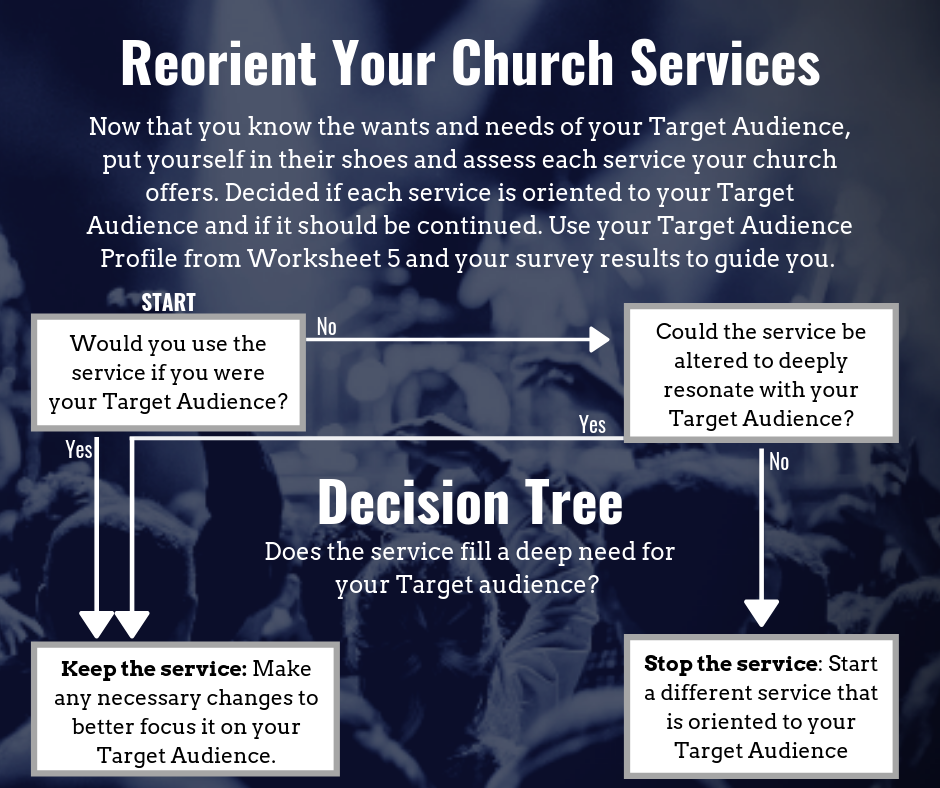
Every aspect of your church should be fine-tuned to engage your Target Audience.
Action Step 3: Revise Your Experiences
Put yourself in the shoes of your Target Audience.
What is the experience like at your church for this person?
How can each small experience be revised to make the overall experience have a powerful and lasting impression on your Target Audience?
Entrance: How does walking into church feel for your target audience?
Website: Is the consent on your update weekly? Is your website outdated?
Greeting: How are your door greeters asked to welcome visitors?
Worship: Is your worship style appealing?
Stage Design: If you have stage design, does it resonate with your Target Audience? What do they expect to see on stage?
Sermon: Are the sermon topics relevant to the life of your Target Audience?
Phone: How is the phone answered at your church?
Integration: What system is a visitor put into that will increase the likelihood they will attend regularly?
Events: Are the events exciting and engaging to your Target Audience? What deep need or pain do they resolve?

Get A Proven Marketing Plan That Increases Enrollments When You Book A Call Today!
Receive customized advice to help your school attract more families!
Instructions:
- Worksheet 7 & 8 filled out and available so you can refer to them.
- Print & complete Worksheet 13.
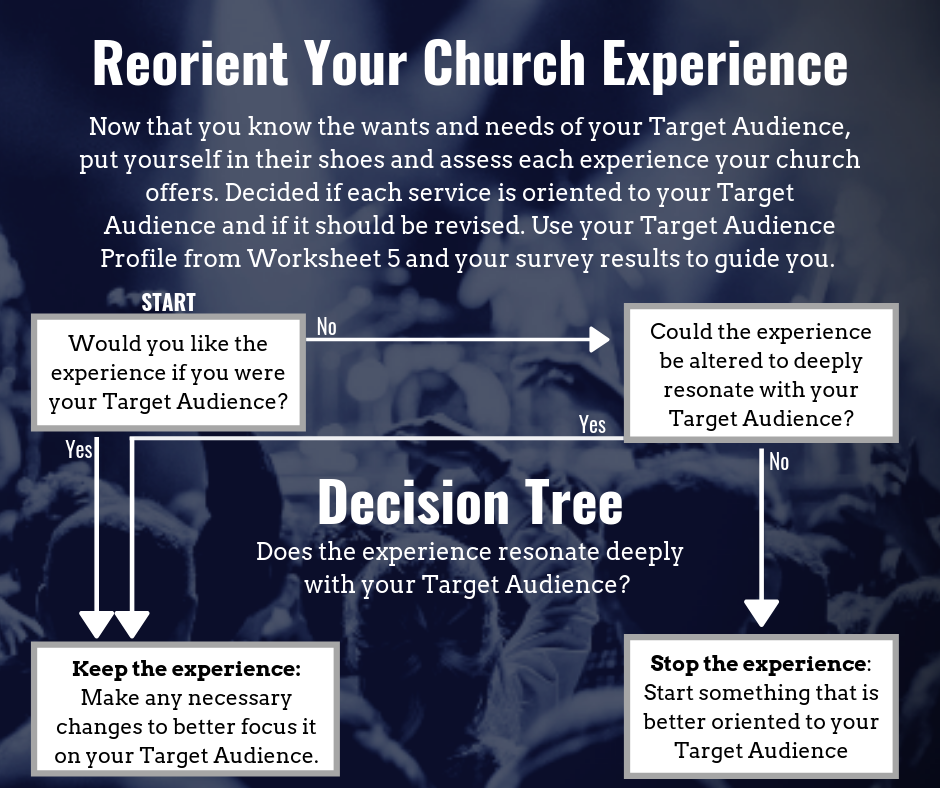
Action Step 4: Revise Your Merchandise
Books: Are your books or eBooks intriguing to your target audience? (Does your target audience even read?)
If a pastor is writing a book, have they asked what pain or pleasure their Target Audience needs to have addressed?
Coffee: Does a coffee shop appeal to your target audience? (Do they want specialty coffee or just black coffee)
T-Shirts: Have you asked your Audience what styles of T-shirts they like best?
Instructions:
- Worksheets 7 & 8 filled out and available so you can refer to them.
- Print & complete Worksheet 14.
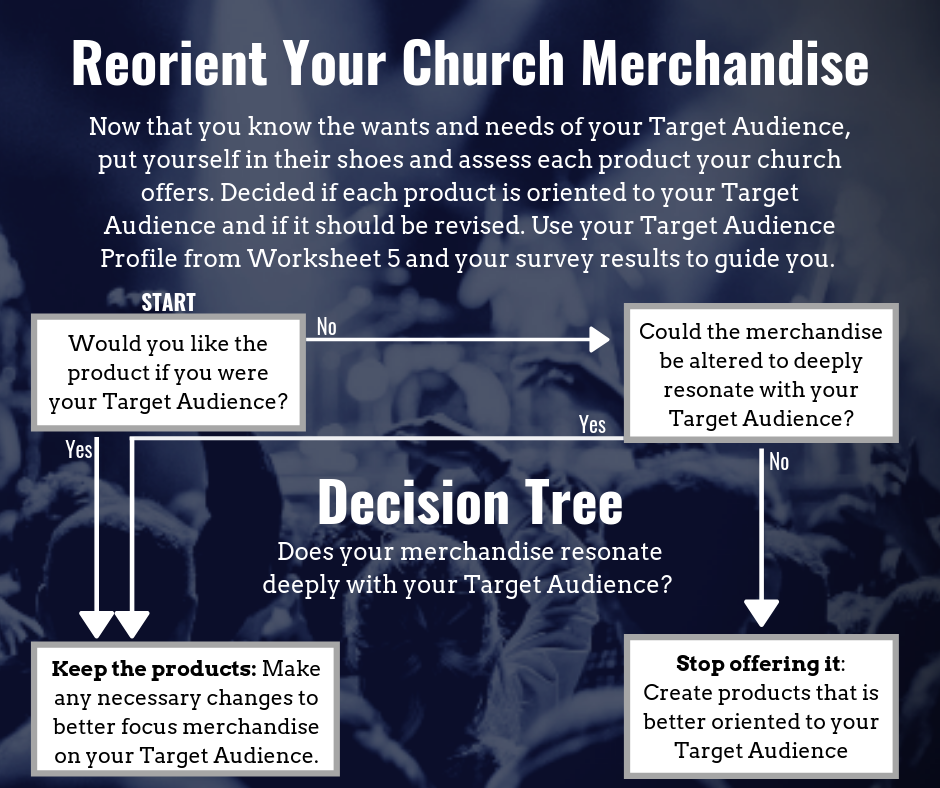
Church Marketing Online Principle 6: When To Try Again
Action Step 1: When To Optimize Your System
What Is An Optimization?
An optimization is a single, incremental change to your marketing system.
After you make a change you then measure the results of that change and decide if the optimization made your marketing system more or less effective.
You then choose to keep or abandon the optimized version.
Then the process is repeated. This is called split testing.
Over time, this makes highly effective marketing systems.
What Is Feedback & Why It’s Crazy Important
There is a right and wrong way to optimize your marketing.
Optimizations should be made based on feedback from your audience and data. Data can be attendance, clicks, shares, number of visitors, event attendance, tithe amount, etc.
Most churches try to implement optimizations by asking THEMSELVES what THEY think would be better. After implementing a change there is no purposeful analysis of data to back the decision.
This is the least effective way to make marketing decisions.
Example: Suppose your church wants to increase tithe.
Everything else staying the same, you try two different formats to ask for tithe in Sunday service.
You test each format for one month and then compare data at the end of the two months to see which was more effective.
Be aware of outside influences on your optimization efforts. If you a test like this over a major Christian holiday your results will be skewed because of the external event.
(One Client found that their congregation was most generous after the pastor first told them what a huge impact their tithe had made and thanked their past generosity. Then he expressed the present need.)

Get A Proven Marketing Plan That Increases Enrollments When You Book A Call Today!
Receive customized advice to help your school attract more families!
When Should You Optimize Your System?
Your church should always be running split tests.
Every day that goes by without an optimization effort is another day things could have been made more effective.
The great news with your optimization efforts is that you can only do one test in any given area of the church at one time.
This often turns out to be less work than many church leaders are already doing.
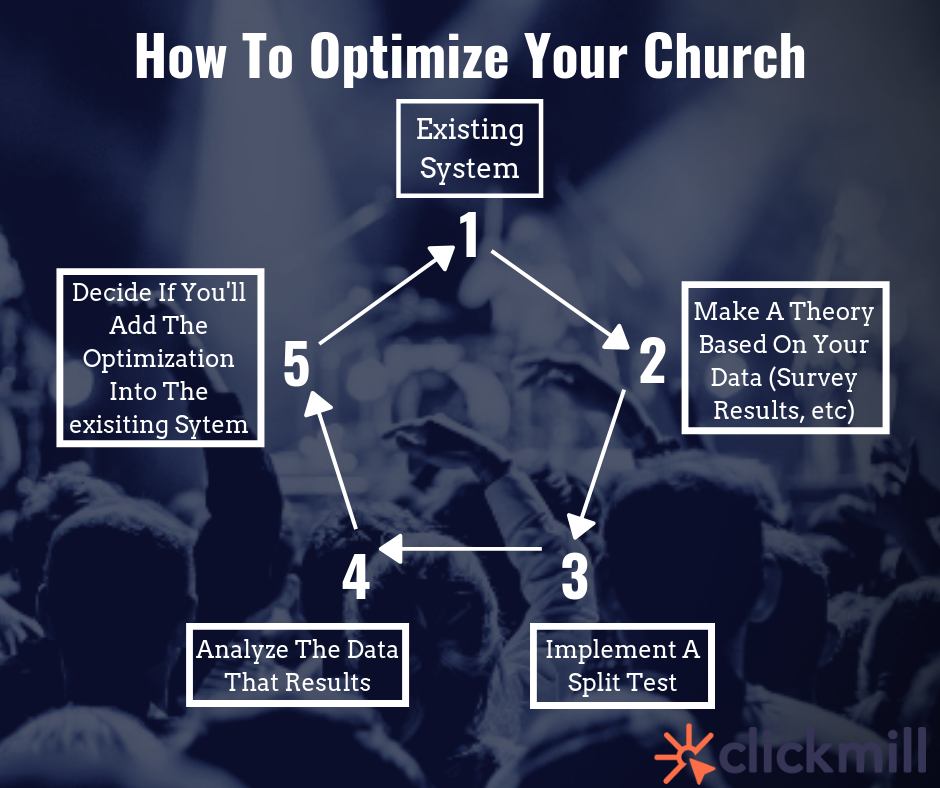
5 Steps To Optimizing Your Church
- Your church already has systems in place that work to some degree. You will start with what’s already in place.
- Based on the results of your survey and other forms of feedback (attendance over time, tithe over time, first-time visitor return rate, etc.) make a theory you think will improve your results.
- Set a time frame for your test. Test your theory and the normal way of doing things for the same amount of time. Be sure to have a way to measure results.
- Collect the final data and decide which method is more effective.
- Decide what method will be used in the future. This method will become the normal operating procedure in the existing system.
REPEAT
Repeating this process over and overproduces highly effective marketing systems.

Get A Proven Marketing Plan That Increases Enrollments When You Book A Call Today!
Receive customized advice to help your school attract more families!
Action Step 2: When To Choose A New Target Audience
Set a reasonable time frame to try your new church marketing online strategies.
Plans like this can often take between 6-18 months to begin bearing measurable fruit.
If your target audience isn’t responding to your message, it may be time to rethink what they want or it may be time to look at another target audience who may be more receptive.
While every soul has the same inherent value to God, we’re expected to be good stewards for Christ, using the talents he has given each of us to produce the best increase for God’s kingdom possible.
If your target audience won’t welcome you or listen to your words despite your best efforts to engage them in a Christlike manner, it may be time to knock the dust from your sandals and re-orient your efforts on a new target audience.
“Jesus answered them, “It is not the healthy who need a doctor, but the sick. I have not come to call the righteous, but sinners to repentance.”
“If anyone will not welcome you or listen to your words, leave that home or town and shake the dust off your feet.
That about sums it up for this in depth article on church marketing online.
Church Marketing Online FAQs
The key principles include knowing who you’re talking to, going to them, building their trust, redirecting their attention, and calling them to action. These principles are based on how Jesus grew his following and are adapted for modern online church marketing.
How can a church identify its core audience for effective online marketing?
Churches can identify their core audience by understanding their existing congregation, analyzing the demographics of people living near the church, studying the clientele of nearby successful churches, and determining if they are reaching the right demographic. This process involves creating detailed audience profiles and understanding their needs and motivations.
Jesus used strategies like deeply understanding his target audience, going out to the people he wanted to reach, building trust through showing love and performing miracles, redirecting attention from the physical to the spiritual, and giving a clear call to action. These strategies can be adapted to modern church marketing efforts.
How can a church build trust with its target audience?
A church can build trust by first addressing the physical or immediate needs of its target audience, similar to how Jesus provided for physical needs before introducing his spiritual teachings. This approach involves understanding what is deeply meaningful to the audience and fulfilling those needs as a way to build a relationship and trust.
Redirecting attention is crucial in church marketing as it involves shifting the focus from immediate, physical needs to deeper, spiritual messages. This can be done by initially addressing the audience’s immediate concerns or interests and then gradually introducing them to the spiritual aspects and teachings of the church.
What was the most impactful principle you have learned about church marketing online? Let us know in the comments!



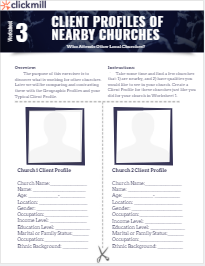
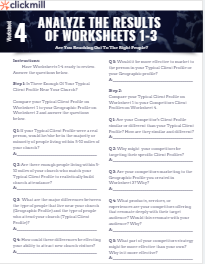

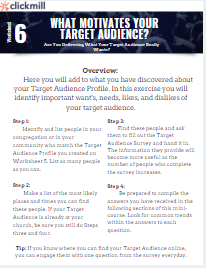
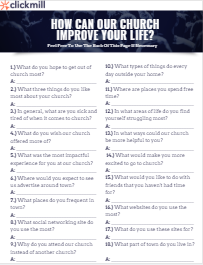
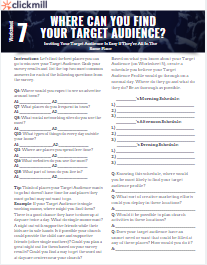
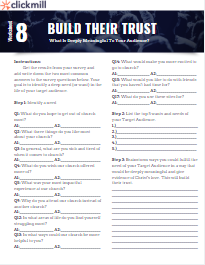
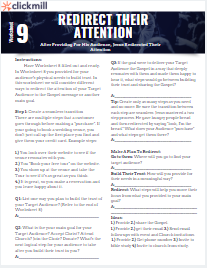
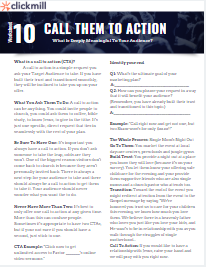

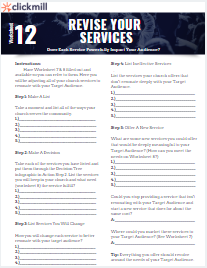
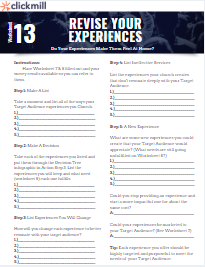
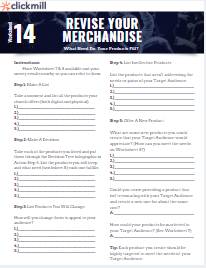
Responses
[…] You can read the rest of this article here – Church Marketing Online: The Biblical Way To Grow Your Church […]